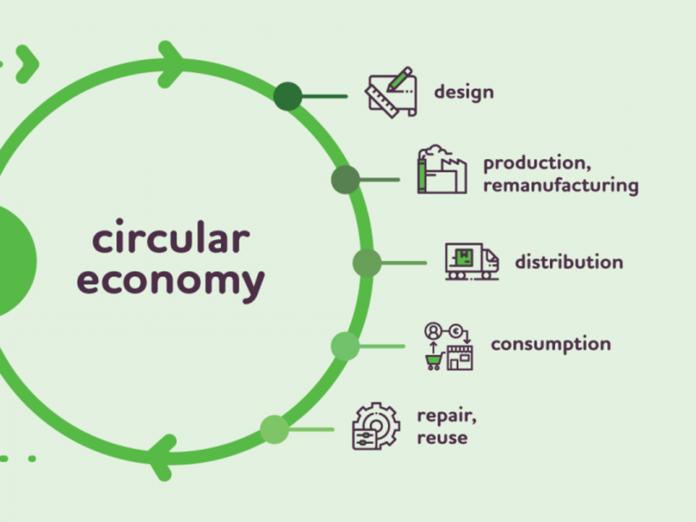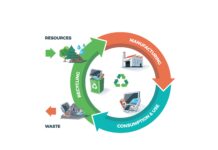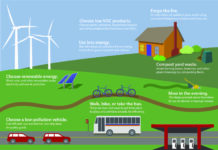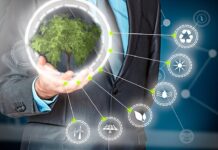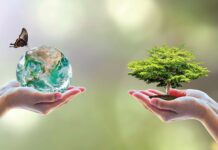The notion of a circular economy has garnered immense attention in recent years as a solution to the ever-increasing environmental challenges that we encounter. Fundamentally, the circular economy is an economic system that endeavors to prolong resource usage by designing products and systems that can be reused, repaired, and recycled. This article delves into the concept of the circular economy, explicating its significance and detailing how products and systems can be fashioned to reinforce this approach.
The Linear Economy: Traditional Model of Production and Consumption
Before exploring the circular economy, it is crucial to comprehend the linear economy. The linear economy is the conventional model of production and consumption in which resources are extracted, processed, and turned into products that are then consumed and eventually disposed of as waste. In this model, resources are treated as disposable with little consideration for the environmental impact of this approach.
The linear economy has contributed to several environmental challenges we face today, including climate change, pollution, and resource depletion. This is because the linear economy is founded on a take-make-dispose model that is not sustainable in the long term. As resources become scarcer, the cost of extracting and processing them escalates, leading to price hikes and supply chain disruptions. Additionally, the disposal of waste products creates environmental issues, including air, land, and water pollution.
The Circular Economy: An Alternative Approach to the Linear Economy
The circular economy is an alternative approach to the linear economy that aims to create a closed-loop system in which resources are kept in use for as long as possible. The circular economy is based on three principles:
- Design out waste and pollution
- Keep products and materials in use
- Regenerate natural systems
The first principle, design out waste and pollution, involves designing products and systems in such a way that they generate minimal waste and pollution. This can be achieved by using materials that are non-toxic and biodegradable, designing products that are easy to repair and recycle, and using renewable energy sources in the production process.
The second principle, keep products and materials in use, involves extending the life of products and materials by reusing, repairing, and recycling them. This can be achieved by designing products that are durable, easy to repair, and made from materials that can be recycled.
The third principle, regenerate natural systems, involves restoring and preserving natural ecosystems and resources. This can be achieved by using sustainable production methods that do not harm the environment, promoting biodiversity, and conserving natural resources.
Benefits of the Circular Economy
The circular economy offers numerous benefits over the traditional linear economy. Some of the key benefits include:
- Reduced resource consumption: The circular economy aims to keep resources in use for as long as possible, reducing the need for new resources to be extracted and processed. This can help to conserve natural resources and reduce the environmental impact of resource extraction.
- Reduced waste: The circular economy aims to keep products and materials in use for as long as possible, reducing the amount of waste that is generated. This can help to reduce the environmental impact of waste disposal and reduce the need for landfill sites.
- Economic growth: The circular economy can promote economic growth by creating new business opportunities and jobs in areas such as recycling, repair, and remanufacturing. In addition, the circular economy can help to reduce costs for businesses by reducing the need for new resources and reducing waste disposal costs.
- Climate change mitigation: The circular economy can help to mitigate climate change by reducing greenhouse gas emissions from the production and disposal of products. By keeping resources in use for as long as possible, the circular economy can reduce the need for energy-intensive production processes and decrease the amount of waste that is sent to landfill.
Designing Products for the Circular Economy
Designing products for the circular economy involves taking a comprehensive approach to product design that considers the entire lifecycle of the product, from raw material extraction to end-of-life disposal. This entails designing products that are durable, easy to repair and disassemble, and made from materials that can be recycled or biodegraded.
One of the key principles of designing products for the circular economy is to use modular design. Modular design involves designing products in such a way that they can be easily disassembled and repaired. This allows for components to be replaced or repaired, extending the life of the product and reducing the amount of waste that is generated.
Another important principle of designing products for the circular economy is to use recycled materials. Recycled materials are materials that have been recovered from waste streams and processed into new products. Using recycled materials in product design reduces the need for new resources to be extracted and processed, conserving natural resources and reducing the environmental impact of resource extraction.
Designing products for the circular economy also involves using non-toxic materials. Non-toxic materials are materials that do not harm the environment or human health. Using non-toxic materials reduces the environmental impact of production and disposal processes and promotes a safer and healthier environment.
Finally, designing products for the circular economy involves considering the end-of-life disposal options for the product. This involves designing products in such a way that they can be easily disassembled and recycled or biodegraded at the end of their useful life. By designing products with end-of-life disposal in mind, we can reduce the environmental impact of product disposal and promote a more sustainable future.
Designing Systems for the Circular Economy
Designing systems for the circular economy involves taking a holistic approach to the way we produce and consume goods and services. This involves redesigning supply chains, business models, and consumption patterns to create a closed-loop system that keeps resources in use for as long as possible.
One of the key principles of designing systems for the circular economy is to create closed-loop supply chains. Closed-loop supply chains involve designing products in such a way that they can be easily disassembled and the materials can be reused or recycled. This requires collaboration between manufacturers, suppliers, and recycling facilities to create a closed-loop system that keeps resources in use for as long as possible.
Another important principle of designing systems for the circular economy is to promote a sharing economy. The sharing economy involves sharing goods and services rather than owning them outright. This can include sharing platforms for transportation, accommodation, and goods such as tools and equipment. The sharing economy reduces the need for new products to be produced and reduces the amount of waste that is generated.
Designing systems for the circular economy also involves promoting sustainable consumption patterns. This involves encouraging consumers to make informed decisions about the products they buy and to choose products that are designed for the circular economy. Sustainable consumption patterns also involve reducing waste by repairing and reusing products rather than disposing of them.
Finally, designing systems for the circular economy involves promoting sustainable production methods. This includes using renewable energy sources, reducing waste and emissions, and promoting biodiversity. By promoting sustainable production methods, we can reduce the environmental impact of production processes and create a more sustainable future.
Barriers to the Circular Economy
Despite the numerous benefits, there are also several barriers to the implementation of the circular economy. Some of the key barriers include:
- Lack of infrastructure: The circular economy requires new infrastructure to be developed to support closed-loop supply chains and recycling facilities. This requires significant investment and collaboration between governments, businesses, and communities to create the necessary infrastructure.
- Consumer behavior: The success of the circular economy depends on consumers making informed decisions about the products they buy and choosing products that are designed for the circular economy. This requires education and awareness-raising campaigns to promote sustainable consumption patterns.
- Business models: The circular economy requires new business models to be developed that support closed-loop supply chains and sustainable production methods. This requires a shift away from traditional business models that prioritize profit over sustainability.
- Policy and regulation: The success of the circular economy also depends on supportive policy and regulation. This includes policies that promote sustainable production methods, provide incentives for businesses to adopt circular economy practices, and regulate the use of toxic materials and waste disposal.
Overcoming these barriers requires collaboration between governments, businesses, and communities. This collaboration can help to create the necessary infrastructure, education campaigns, and supportive policies needed to transition to a circular economy.
Examples of the Circular Economy in Practice
There are many examples of the circular economy in practice. One example is the use of recycled materials in the production of new products. Many companies are now using recycled materials in their products, including clothing, furniture, and electronics. For example, the furniture company IKEA has committed to using only renewable and recycled materials in its products by 2030.
Another example of the circular economy in practice is the use of modular design in product design. Many products, including smartphones and laptops, are now designed with modular components that can be easily replaced or repaired. This extends the life of the product and reduces the amount of waste that is generated.
The sharing economy is also an example of the circular economy in practice. Sharing platforms such as Airbnb, Uber, and Zipcar allow individuals to share goods and services rather than owning them outright. This reduces the need for new products to be produced and reduces the amount of waste that is generated.
Conclusion
The circular economy offers a sustainable alternative to the traditional linear economy. By designing products and systems that keep resources in use for as long as possible, we can reduce the environmental impact of production and consumption and create a more sustainable future. While there are many barriers to the implementation of the circular economy, collaboration between governments, businesses, and communities can help to overcome these barriers and promote a more sustainable future.
Google News | Telegram

